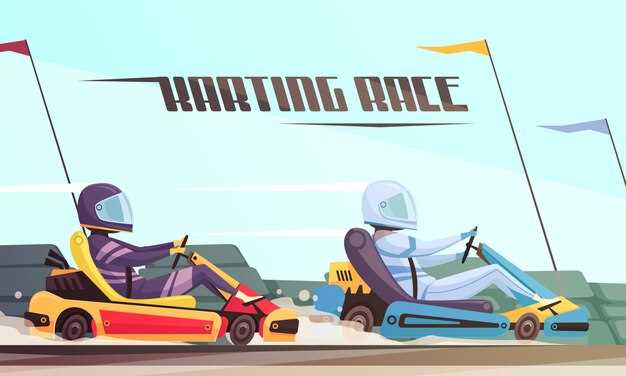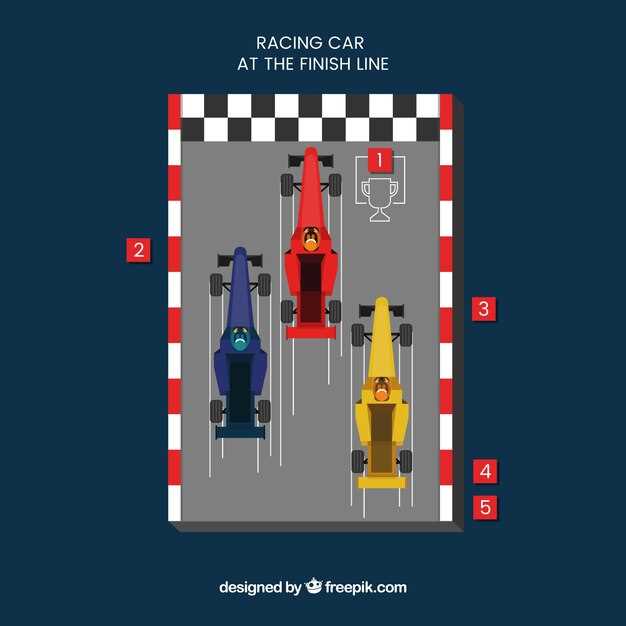
Automotive enthusiasts often find themselves choosing between various driving events to unleash their passion for speed and performance. Among the most popular options are track days and autocross events. While both provide thrilling experiences and opportunities to enhance driving skills, they cater to different preferences and skill levels, leading to significant differences in format and execution.
In essence, a track day is typically held on a closed racing circuit, allowing participants to drive their vehicles at high speeds on a longer, more continuous course. This format emphasizes sustained speed, vehicle performance, and mastering driving techniques over longer periods. In contrast, autocross is characterized by shorter, timed runs on a smaller, cone-marked course. This event focuses on precision, handling, and agility, making it an excellent choice for drivers looking to hone their skills in a more controlled environment.
Understanding these two types of motorsport not only enriches the experience for participants but also aids in making informed decisions about which event to attend. A side-by-side comparison of track days and autocross reveals the unique aspects and benefits of each, ultimately guiding drivers toward their ideal adrenaline-fueled adventure.
Understanding Track Days and Autocross: A Practical Guide
Track days and autocross are two popular types of motorsport that provide enthusiasts the opportunity to drive their vehicles in a controlled environment. While both activities are centered around performance, they differ significantly in format, objective, and experience.
Track days typically occur on racetracks where participants can drive their vehicles at higher speeds on a closed circuit. This format allows drivers to explore their car’s capabilities, enhance their driving skills, and enjoy the thrill of racing in a safe environment. Vehicles are typically classified by performance categories, and drivers often receive guidance from instructors to maximize their learning experience. The focus during track days is on speed, precision, and the overall driving experience.
In contrast, autocross involves navigating a timed course set up with cones, often on a large parking lot or an airstrip. The courses are designed to test a driver’s skill in maneuvering through tight turns and sudden changes in direction. Autocross is generally slower than track days, emphasizing technical driving skills over outright speed. Each participant runs the course individually, and times are compared to determine the winner, making it a competitive yet accessible form of motorsport.
Both track days and autocross require vehicles to be in good mechanical condition, and both disciplines have specific regulations regarding safety equipment and modifications. Understanding these differences is essential for anyone looking to participate, as each offers a unique experience that caters to various aspects of automotive enthusiasm.
Ultimately, whether a driver prefers the high-speed thrill of a racetrack or the technical challenge of an autocross course, both types of motorsport provide invaluable opportunities for growth and enjoyment behind the wheel.
Key Features of Track Days: What to Expect on the Circuit

Track days offer a unique opportunity for motorsport enthusiasts to experience the thrill of driving on a race circuit. Unlike autocross events, track days provide a more open and expansive environment, allowing drivers to push their vehicles to their limits. Here are the key features you can expect during a track day:
- Dedicated Circuit Access: Track days take place on purpose-built race tracks, giving drivers a safe and controlled environment to improve their driving skills.
- Variety of Vehicle Types: Participants can drive a wide range of vehicles, from high-performance sports cars to well-modified road cars, each designed for different types of motorsport experiences.
- Structured Sessions: The event typically includes different sessions categorized by skill level, allowing novice, intermediate, and advanced drivers to participate according to their experience.
- Instruction and Coaching: Many track days offer professional driving instructors, providing valuable feedback and techniques to enhance driving performance.
- Data and Timing: Some events provide timing systems to allow participants to track their lap times, helping them measure improvement and competitiveness.
- Safety Measures: Track days prioritize safety, featuring measures such as safety briefings, the presence of corner workers, and proper safety gear requirements.
- Social Atmosphere: These events foster a sense of community among motorsport enthusiasts, encouraging networking and friendships among participants with similar passions.
Overall, track days serve as a perfect introduction to motorsport for beginners while allowing experienced drivers to refine their skills and enjoy the adrenaline rush in a secure setting.
Autocross Explained: Skills and Setup for Cone Courses

Autocross is a form of motorsport that emphasizes precision driving over outright speed. Unlike traditional racing, autocross takes place on a defined course marked by cones, where drivers compete against the clock rather than against each other. This setup allows participants to focus on skill development, vehicle handling, and tactical decision-making in a safe environment.
To excel in autocross, several key skills must be developed. First and foremost is car control. Drivers need to master techniques like braking, acceleration, and steering to navigate tight corners and avoid penalties associated with hitting cones. Another critical skill is line choice–determining the fastest path through the course can make a significant difference in lap times. Additionally, reflexes play a crucial role, as drivers must react quickly to changing conditions and obstacles presented by the course layout.
The setup of a vehicle for autocross is equally important. Although many participants use their daily drivers, optimizing the car can enhance performance significantly. Key adjustments include tire selection–using tires with better grip can improve traction–and suspension tuning to provide better handling during sharp turns. Also, reducing weight can enhance agility, allowing for quicker changes in direction. Proper alignment settings may help to achieve better cornering stability, further improving the overall driving experience.
In comparison to other motorsport disciplines, autocross offers a unique blend of speed, strategy, and skill development. The emphasis on individual performance allows both novice and experienced drivers to refine their abilities in a competitive yet supportive atmosphere. By focusing on both skill enhancement and vehicle setup, participants can maximize their potential and fully enjoy the thrill of cone course racing.
Main Differences Between Track Days and Autocross Events
Track days and autocross events represent two distinct types of motorsport, each providing unique experiences for drivers. One of the primary differences lies in their structure and format. Track days occur on dedicated racetracks, allowing participants to drive continuously on wide open circuits with multiple turns and straights. This setting enables drivers to experience high speeds and sustained performance over longer durations.
In contrast, autocross events are held in temporary settings, often utilizing parking lots or closed-off sections of roads. Competitors navigate a marked course featuring tight turns and various obstacles, emphasizing precision and maneuverability rather than outright speed. Each driver typically completes the course individually against the clock, which fosters a more competitive atmosphere focused on skill and technique.
Another key difference is the vehicle requirements. Track days often permit a wider range of vehicles, including high-performance sports cars and modified street cars. On the other hand, autocross has specific regulations that may impose limitations on vehicle modifications, ensuring a more level playing field among participants.
Additionally, the nature of competition varies significantly. Track days are more about enjoyment and honing driving skills without the pressure of racing against others. Conversely, autocross involves direct competition, where drivers aim for the best time, often resulting in a more intense and strategic approach.
Lastly, the community and atmosphere can differ between the two. Track days tend to attract enthusiasts looking for camaraderie and a shared love for high-speed driving. Autocross events, while still fostering community spirit, often bring together those who relish the competitive edge and technical challenges of the sport.
